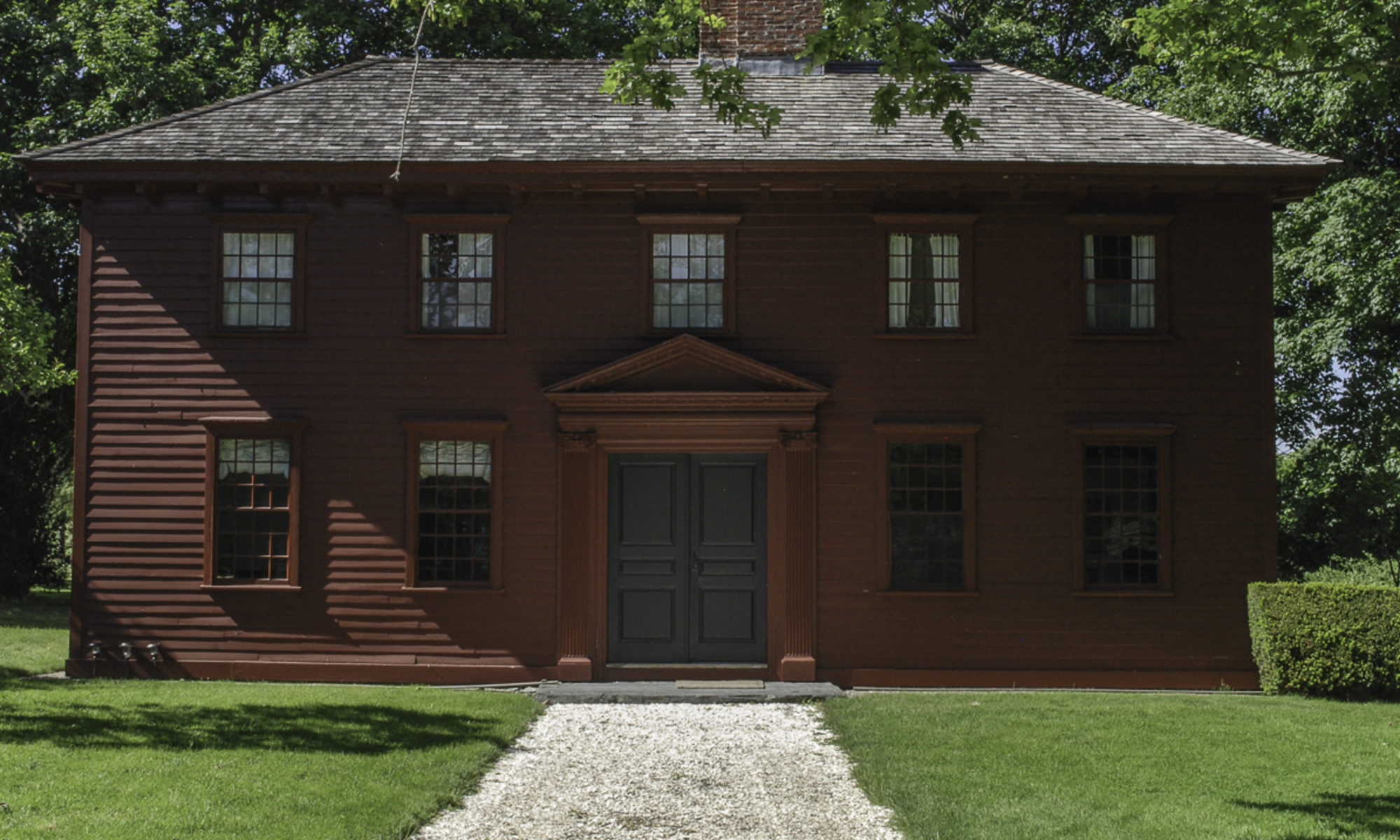Whitehall, home of the great early modern philosopher George Berkeley from 1729-1731, is set on the remnants of a seventeenth century farm three miles from downtown Newport. Berkeley and his new wife, Anne Forster, daughter of the Chief Justice of Ireland who was educated in France, arrived in January, 1729 intending to found a college which would bring the sons of colonists and Native Americans together. The college was to be located on Bermuda, until Berkeley experienced the great beauty of Aquidneck Island. The Berkeleys were accompanied by John Smibert, artist, and Richard Dalton, architect, as well as a companion for Anne, a Miss Handcock, about whom we know little. The Berkeleys brought with them furniture and a library of 1000 books.
Soon after arriving, while awaiting the birth of their first child, Berkeley enlarged the original dwelling to reflect current English tastes in architecture, and perhaps his own eminence. He chose the Palladian style for its prominent double front door, making it one of the first vernacular buildings in America to use such a detail.
Berkeley is credited with sparking the intellectual life of the colonies. During his stay on Aquidneck Island, many visitors knocked on his door to learn and receive counsel from this renowned philosopher and educator.
He wrote these famous lines to express his optimism for America:
“Westward the Course of Empire takes its Way;
The four first Acts already past,
A fifth shall close the Drama with the Day;
Time’s noblest Offspring is the last.”
Unfortunately, funds for his planned college were not forthcoming from the British Parliament, and so the Berkeley family returned to the British Isles, where he became Bishop of Cloyne in Ireland.
Bishop Berkeley gave his property and much of his library to Yale College upon his departure in the summer of 1731. Rent income from Whitehall was to be used for scholarships for those studying for the ministry at Yale, and the college’s divinity school is named after him. His name continued to be associated with higher education— in the nineteenth century planners for the new University of California named the town of its location after this eminent man.
